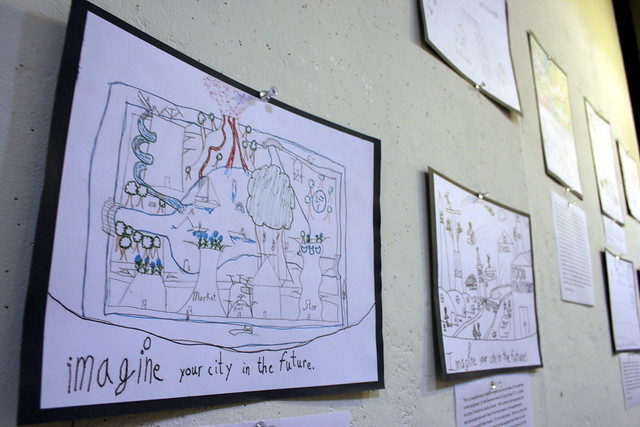HALIFAX – Cities, as a rule, almost always outlive their founders, architects, and inhabitants. Despite millennia of transformation, London today retains its essential structure as laid out by the Romans in the 2nd century CE, while the medina of Fez, in Morocco, has sustained waves of invasion and colonization to preserve a built environment and way of life born in the early 9th century CE. Spaces that work, that are built on tenable foundations and principles, tend to last.
Thursday evening kicked off a three day conference at Dalhousie University’s School of Architecture and Urban Planning, entitled IMAGINE. This year’s annual planning conference was ‘designed to explore and discuss the importance of long term planning’, and, as suggested by Prof. Christine Macy in her opening comments, consider a kind of thinking about planning that goes ‘beyond the twenty year mortgage and the four year political term.’
The conference asks participants to ponder planning beyond our own lifetimes, to imagine the city in 100 years. In his keynote address, however, Prof. Bruce Tonn of the University of Tennessee at Knoxville, proposes extending this perspective a touch further: for a planning perspective to become truly sustainable, Tonn has developed a theory known as ‘very long-term planning’, which considers sustainable planning in terms of the next hundred, thousand, even tens of thousands of years.
‘How much longer do we need the earth to sustain human life?’ he asks. Tonn calls the imperative of very long-term planning the central responsibility of young planners going forward, and ‘maybe the next phase of human civilization.’
As this year’s keynote speaker, the soft-spoken man from Tennessee’s address certainly raises the bar of expectation over the 100 year frame proposed by the conference itself. Tonn is a self-avowed ‘futurist’ – separate from the 1920s Italian artists’ movement – who is consulting editor with the international journal Futures, whose planning philosophy revolves around the long-term obligations to future generations. This is a man with his eyes on the horizon, both near and distant, whose planning objective is to ‘make pathways to extinction inevitable.’
Tonn emphasizes the importance of interdisciplinarity, which comes as no surprise. With undergraduate training in civil engineering, and graduate training in urban planning, Tonn today teaches in the department of political science at the University of Tennessee at Knoxville. Whereas politicians and economists are highly trained experts in specific fields which privilege short-term results and benefits, Tonn praises the generalist and long-sighted nature of planning, calling it the only established public function with a long-term focus.
To achieve genuine sustainability of human settlements, however, the current focus must be extended beyond the 25 or 50 year focus adopted by most municipalities – Halifax’s Regional Municipal Planning Strategy of 2006, for example, provides a plan for 25 years.
The primary barriers to very long-term planning, according to Tonn, are psychological and political. When thinking about the future, people tend not to think beyond the next 15 years; we tend toward uncertainty over our ability as societies to control the future; politicians are too busy managing staff and basic obligations to even think about the laws they enact; and political decision making and project management are markedly restrained, at least in North America, by staggering levels of debt at every level of government.
Planners are, by comparison, uniquely positioned as intermediaries between an uncertain population and stagnant governments, an advantage which should be vigorously embraced toward the creation of holistic planning strategies that observe our long-term obligations to future generations.
Tonn’s ideas hold a certain intrigue in a city such as Halifax, the capital of a have-not province steeped in a $13 billion debt, and a municipality in which over 6% of the annual operating budget goes to servicing debt and interest. The city’s downtown is in palpable decline, and the only tangible effort toward ‘reinvigoration’ has been a decadent, redundant convention centre.
How do you envision ‘very long-term planning’ in your community? In your city? In such a political climate, in an amalgamated city of many divergent communities, Tonn’s challenge to future generations of planners is characteristically as ambitious as it is vital: how can we conceive of human settlement plans, transit strategies and sources of energy that do not jeopardize the viability of generations one hundred, five hundred, or a thousand years in the future?

